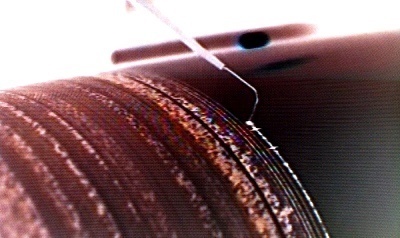The Richter Scale
When earthquake generate seismic waves that travel through the Earth’s crust, they can be recorded on seismographs. When a seismograph records these waves, a trace that shows the amplitude of the wave measurements is generated and converted to the Richter Scale measurement. Depending on the sensitivity of the device, measurements can be made for earthquakes that occur a significant distance away from the measuring device. The Richter scale does not measure the damage that an earthquake causes, just the strength of it. This is because it cannot take into account the difference between the damage that an earthquake near a large population area causes versus the damage that one in a remote region causes.
The History of the Richter Scale
Charles F. Richter initially developed the Richter Scale in 1935 in order to compare the magnitudes of different earthquakes. The scale takes the logarithm of the amplitude of waves that a seismograph records and includes adjustments for the distance between the epicenter of the earthquake and the measuring device. When Charles Richter first developed the scale, data had to be collected from seismographs that the same company produced. Today, as long as the seismographs are calibrated to the same standard, they can be used in conjunction with each other regardless of the brand.
How Does the Richter Scale Work?
The Richter scale expresses magnitude in whole numbers and decimal fractions to the tenths place. Since the scale is logarithmic, each whole number increases if the magnitude of an earthquake equates to ten times the amplitude of ground waves and a 31 times the strength of the earthquake. Generally, an earthquake of a 5.0 magnitude is ten times stronger than one of a 4.0 strength on the Richter scale. There is no upper limit to the Richter scale. However, earthquakes of a magnitude of 8.0 or greater generally occur once a year, world-wide. Earthquakes of a magnitude of 2.0 or less are referred to as “micro earthquakes” and are normally only measured on seismographs located close to the microquake.
What Are the Richter Scale Measurements?
Less than 3. 4 – Is only detected by local recording devices. Typically more than 800,000 earthquakes of this magnitude occur annually.
3.5– 4.2 – Can almost be noticed inside. Approximately 30,000 earthquakes of this strength occur annually.
4.3– 4.8 – Humans can notice these, they rattle doors and windows. Approximately 4,800 occur annually.
4.9-5.4 – Dishes can break, doors swing open. Approximately 1,400 occur each year.
5.5-6.1 – Some damage is done to buildings, bricks can fall. 500 occur annually.
6.2-6.9 – Buildings are significantly damaged. Approximately 100 occur each year.
7.0-7.3 – Serious damage is done to the affected area. Buildings can collapse, bridges can twist.
7.4-7.9 – Great damage is done and many buildings collapse.
More than 8.0 – Complete destruction. Material is thrown into the air.


Comments - No Responses to “The Richter Scale”
Sorry but comments are closed at this time.